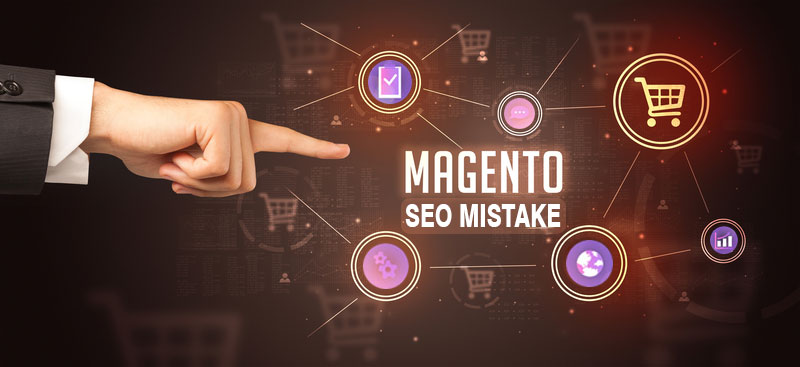
Common Magento SEO Mistakes and How to avoid them
For any e-commerce business, it is very important to know what their customers search about to know the search capability of their store, and most importantly to make their products easily available in search engines. For all these, you need a strong SEO tool that ensures your platform ranks higher in organic search.
Magento SEO Services does not hammer with key elements while focusing on SEO. In fact, Magento ecommerce platform is filled with features that work in favor of SEO ranking. From integrated content pages to independent page titles, Magento has many features that help to supercharge your ecommerce store.
Magento has many benefits enabling businesses to deal with high traffic and huge sales. In haste or due to lack of experience, you may not know how to fully utilize Magento SEO Services, so in this blog, we are going to discuss the mistakes which you may make and if you do how to avoid them.
Common Magento SEO Mistakes and Tips for Overcoming Them
-
Forgetting To Change the Default Meta Tags
If you are a beginner then, first of all, you need to change the default Magento setup, as it comes with limitations and lacks advanced features. Default Magento does not have the capabilities to boost up your SEO rankings on search engines.
For getting better SEO results, you need proper ‘Title Tags’ and ‘Meta Description’ but with the default setup of Magento, it’s not going to work. Altering the default, Magento setup will give you a better click-through rate, apart from having unique and engaging Meta Descriptions for your store.
-
Neglecting the Importance of Alt Tags
Magento can’t identify the importance of product images on its own. Then what is the point of spending hours in creating a high-quality image? If you want to make your high-quality product image work for higher SEO, then you must write a specific, relevant, to-the-point description along with an appropriate ‘alt tag’ for each of your product images.
Adding an alt tag to your images on your platform will allow search engines to reach them easily and enhance your product image visibility. Moreover, alt tags play a vital role in forcing viewers to take buying decisions instantly.
-
Usage of Non-Descriptive URL
It is one of the biggest mistakes Magento ecommerce developers make when it comes to optimizing stores. Keeping a non-descriptive URL for products will delay search engine spiders to read or index your site, so reaching your target audience will be a difficult task.
Using a descriptive URL, having relevant keyword phrases in the URL will increase the indexing speed of your online store in search engines. This will make your online store URL more readable, engaging, and SEO-friendly URLs.
For example, if you are going to optimize your store URL for casual trousers for men then prefer this format.
“yourstorename.com/product/men-casual-trousers”
By following this format you can get more visitors and your web page generates more quality leads from search engines.
-
Forgetting to Change ‘robots.txt’ File
Unlike Professional SEO experts most of the store owners forget to tweak the ‘robot.txt’ this will restrict search engine spiders to crawl your site pages.
To have a better SEO ranking your website’s “robots.txt” & Meta robots directives must be tweaked to the appropriate form and should place in the <head> section of your web pages.
This ensures your web pages get INDEX and FOLLOW by search engines. Check whether your web pages have the desired robots.txt and Meta robots directive by following this.
“Accessing your System → Configuration → General → Design → HTML Head → Default robots.”
-
Ignoring rel=canonical
A prolific Magento store may have hundreds and thousands of product pages, so the chances of having duplicate content will be high. To overcome this, many store owners prefer to have their products URLs with non-descriptive elements like “? =, P-5” to limit their web pages from getting indexed in search engines.
Instead of considering non-descriptive elements store owners should make use of “rel-canonical”. The canonical link represents a master copy and limits search engines to index duplicate pages.
However, to avail better SEO ranking you need to set up canonicals correctly.
Bonus – Magento Loading Speed
Magento platform is a heavy-duty platform that makes your store takes a lot of time to load. Your store’s loading time creates an impact on its crawling in search engines.
To overcome this issue, you need to make sure to apply proactive ways to improve your store loading time. You can use a cache solution or download Magento 2 Catalog Ajax Scroll for improving your store page loading time. AJAX will load your store’s next page automatically when a customer scrolls to the end of the page.
Conclusion
Businesses shouldn’t ignore these crucial mistakes of Magento SEO, as 93% of all internet activity starts with a search and thus, ignoring such mistakes will affect site performance in search engines.


